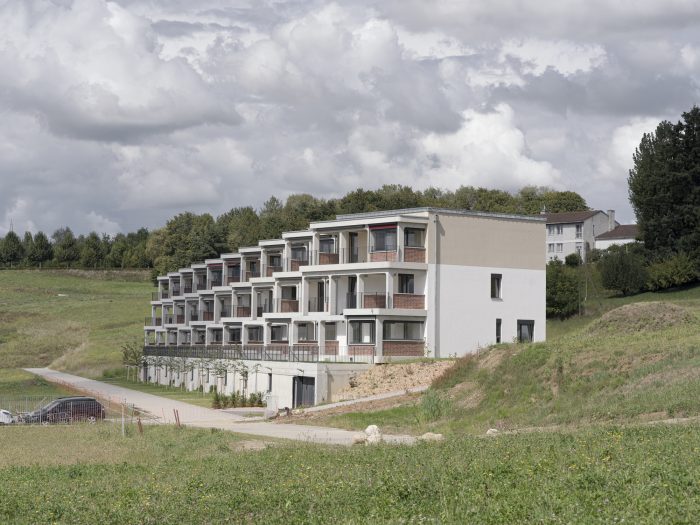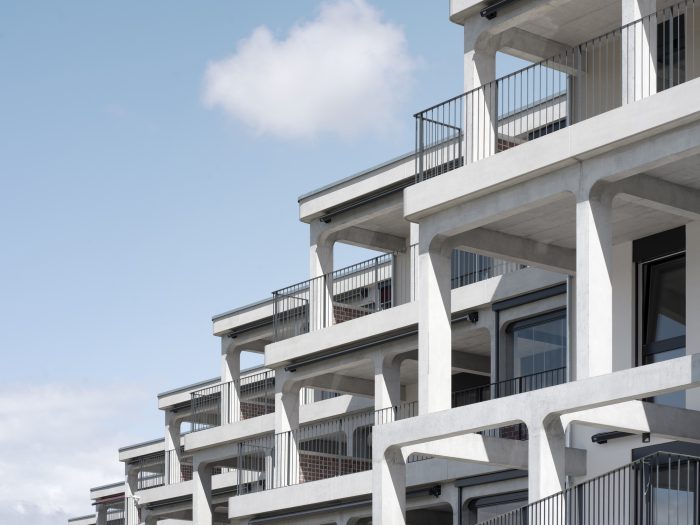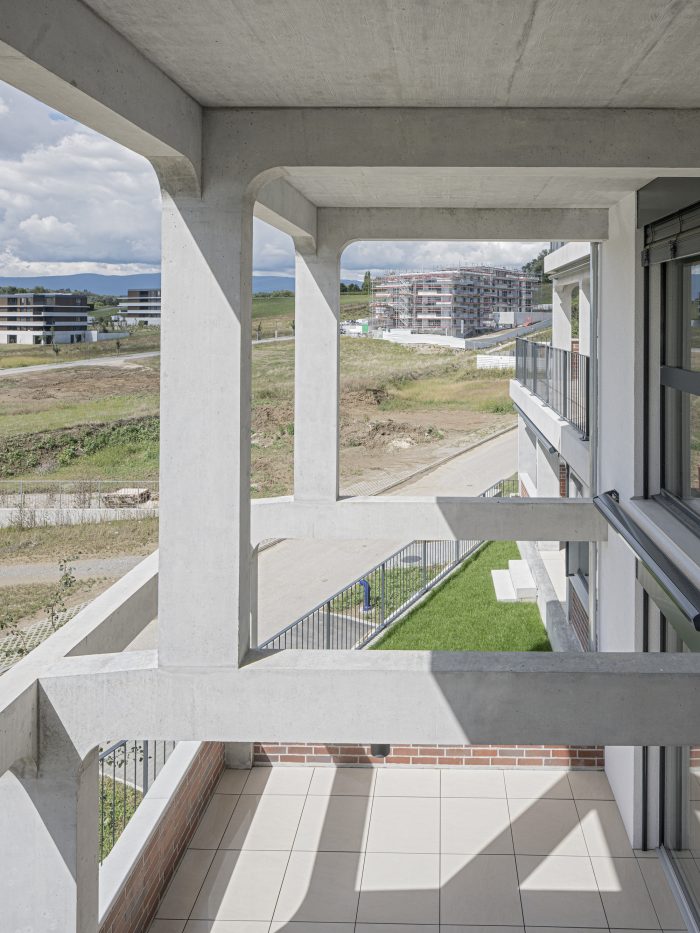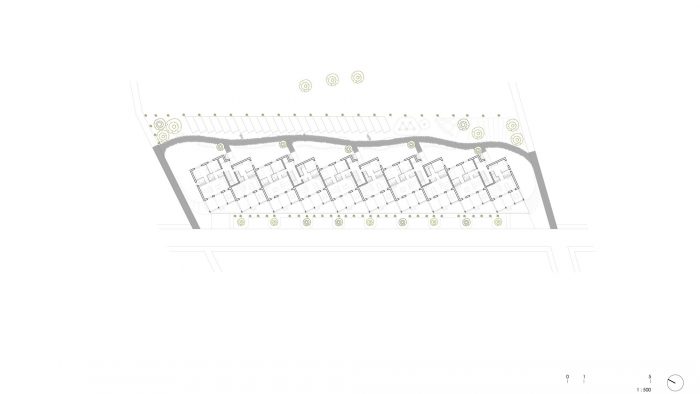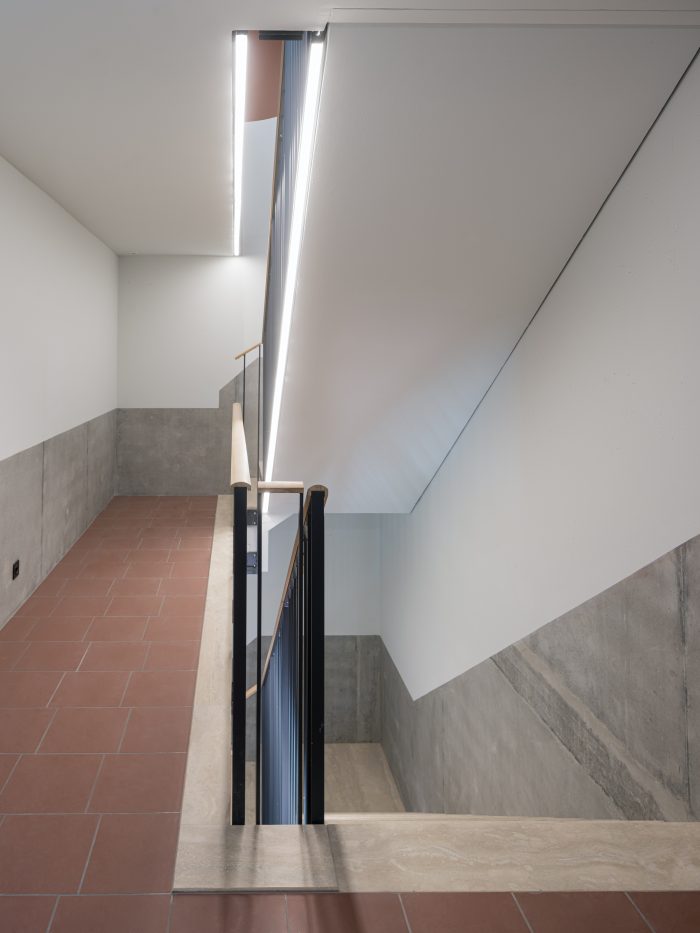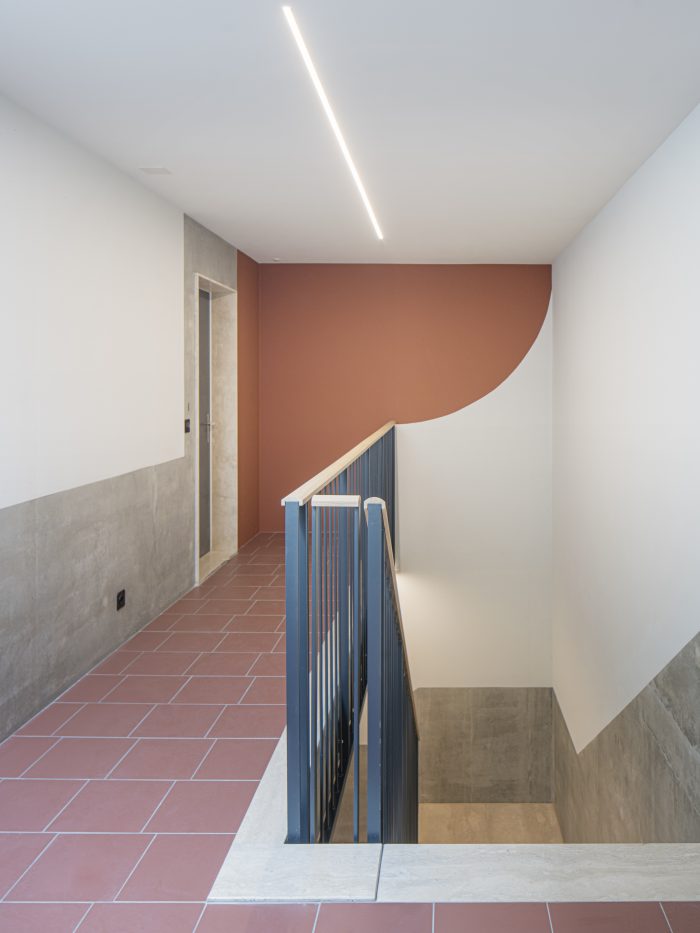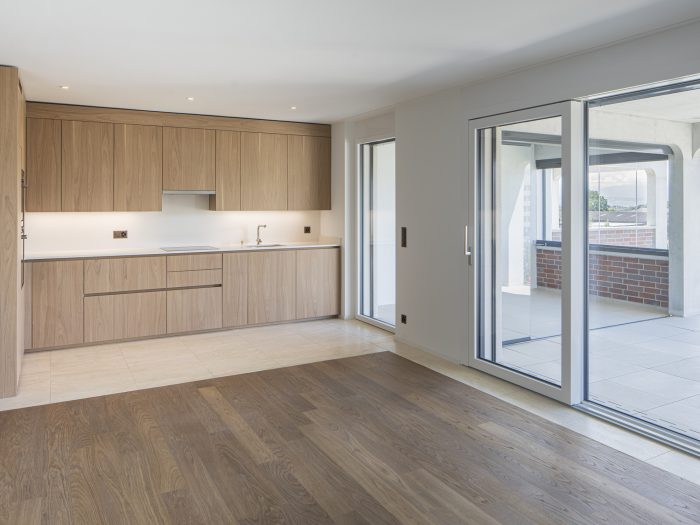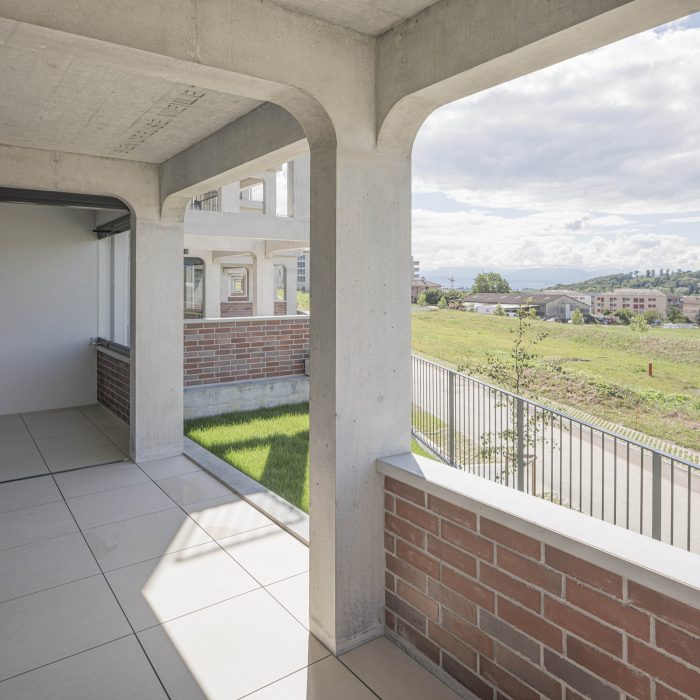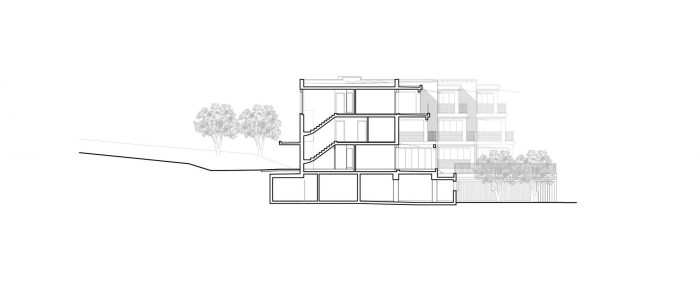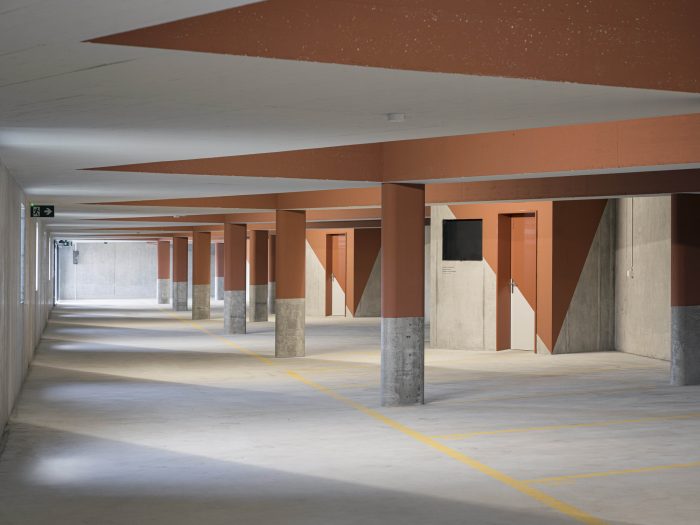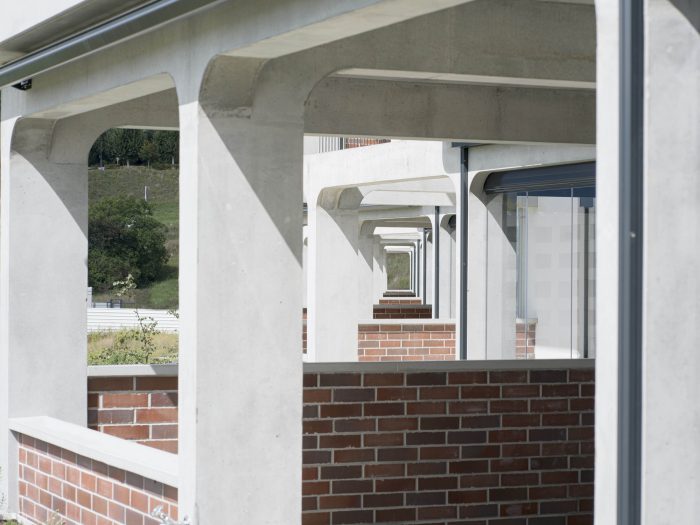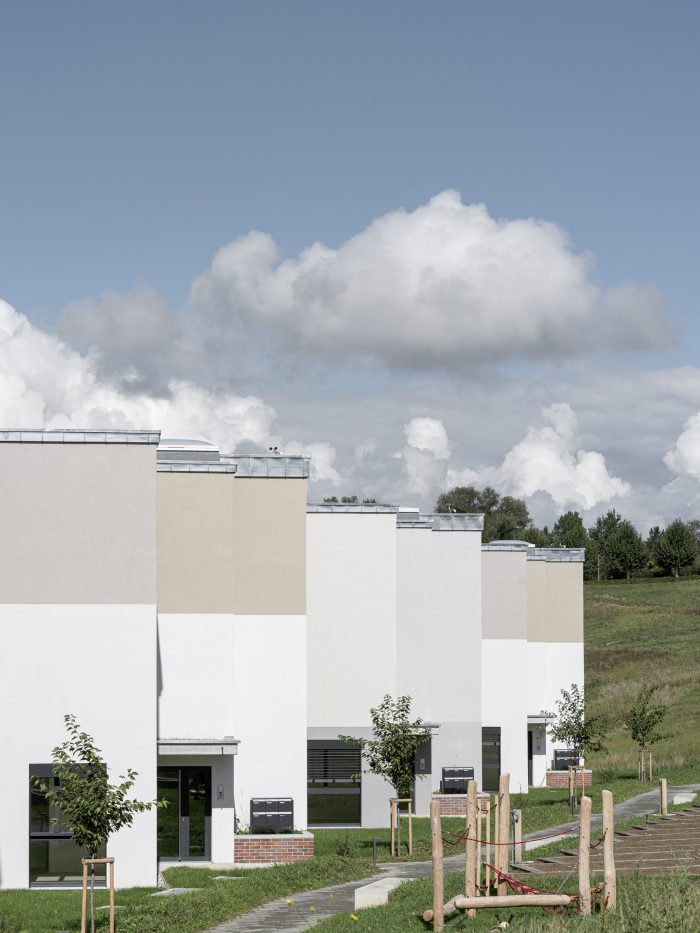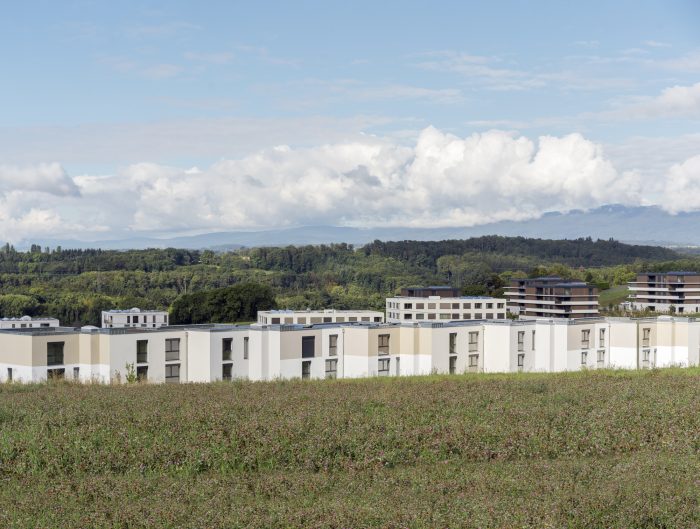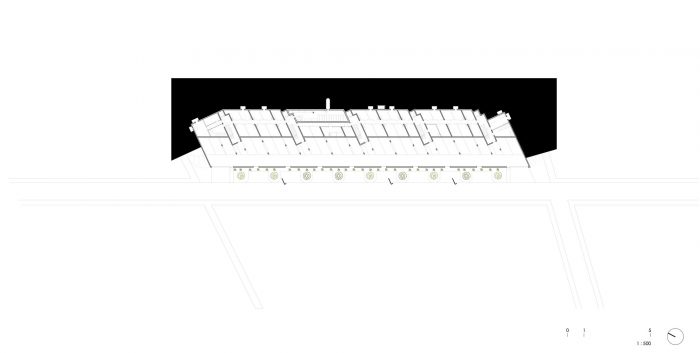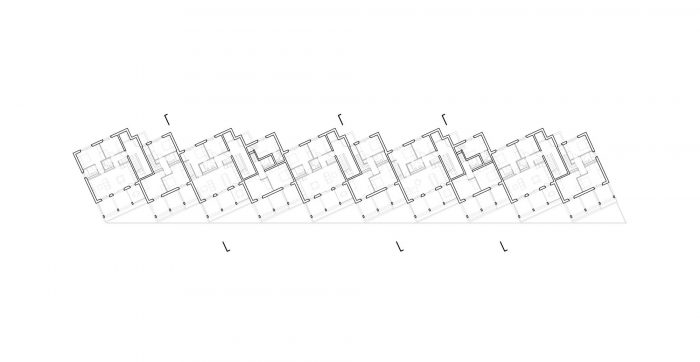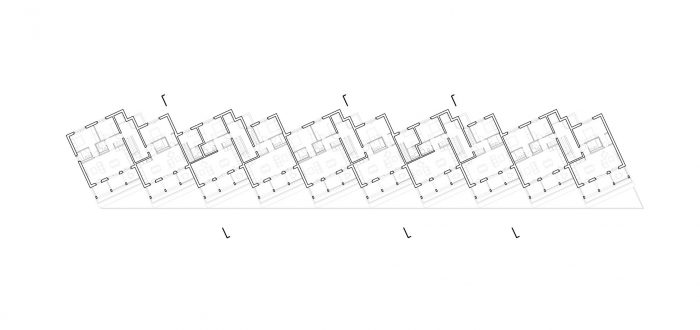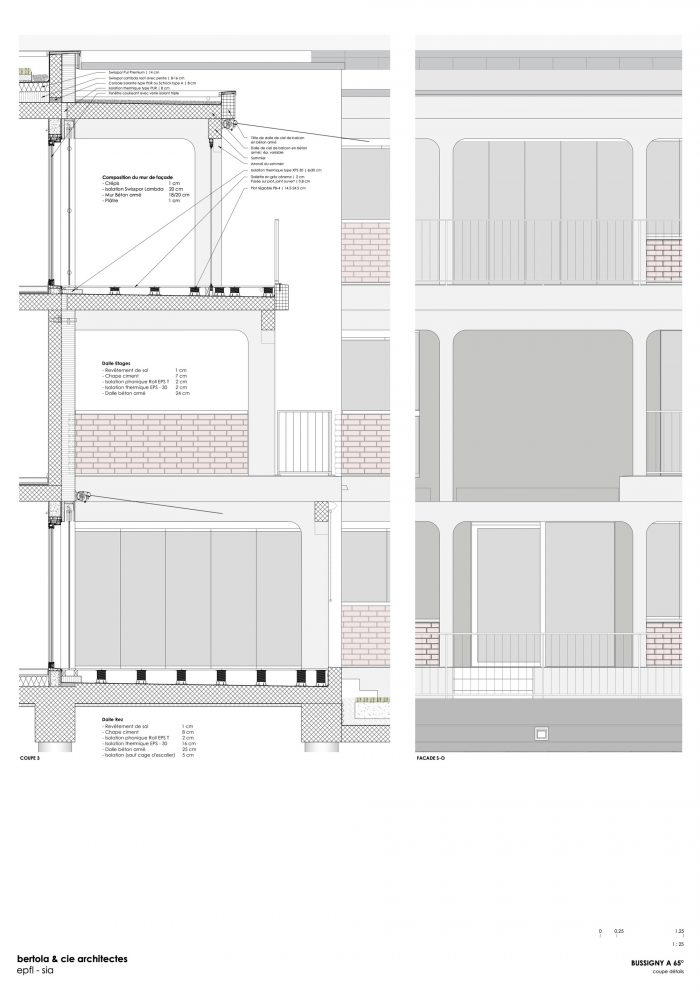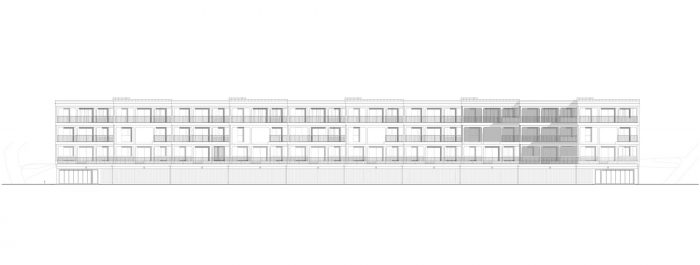背景。继洛桑郊区的西布西尼开发计划到2030年容纳3000名居民之后,该项目正在开发一种替代密集化和 “组团式 “的独立房屋,同时避免仅在垂直度上分割的房屋形态。在保持住房单元明显特征的同时,混合了单层和复式的类型。
Context. Following the development of West Bussigny in the suburbs of Lausanne is planned for 3,000 inhabitants by 2030, the project is developing an alternative to densification and to the individual house by “grouped” type housing while avoiding a morphology of housing segmented only on the verticality. A mix of simplex and duplex typology while keeping a clearly distinct identity of housing units.
设计理念。为了优化西南方向的外立面,3层的10个体量被刻意地以65°的方向排列。这种体量上的游戏也使得住宅的每个外部空间的私有化成为可能。这种偏移意味着这些体量的角落是独立的冬季花园。建筑概念严格遵循了这样的意愿,即在一个套间中对体量进行塑形标记,或者在街道边对单位进行重复标记,这样未来的居民就不会用住房栏杆来识别他们的住宅,而是用3层的小房子来连接在一起。因此,该建筑在近100米的距离内线性地与街道平行发展。一个网格结构的项目,反映在楼梯间的建筑结构中,并通过原地和预制混凝土平台的结构夹层来识别。
Concept. Ten volumes of 3 levels are deliberately oriented at 65° in order to optimize the orientation of the facade to the southwest. This volumetric play also makes it possible to create privatization of each exterior space of the dwellings. This offset means that the corners of these volumes are home to independent winter gardens. The architectural concept rigorously follows the will to mark volumes plastically in a suite or a repetition of units voluntarily marked on the street side so that the future inhabitants identify their dwellings not with a housing bar but with small houses of 3 levels joined together. The building thus develops linearly and parallel to the street over a distance of almost 100m. A grid structures the project and is reflected in the structure of the building for the stairwells and is identified by the structural entablature of the in-situ and prefabricated concrete terraces.
类型化。在这一框架内,根据一定的系统性,发展出了大量的单式或双式的类型。这些不同的公寓可以相互叠加、重叠,或者相互建构。这种类型学的多样性有利于各代人的社会组合,以应对我们社会的挑战。
Typology. Within this framework, a multitude of typologies simplex or duplex is developed according to certain systematics. These different apartments can be superimposed, overlapped, or built into each other. This diversity of typology favors the social mix of all generations that responds to the challenges of our society.
物质性。在西北侧,立面的构成在体量、重复和开间的调节布局之间寻求某种平衡。在西南侧,第一个计划是由柱子和嵌入的结构呈现出来,抵消了混凝土网格的节奏,以及用熟料砖和金属栏杆填充。
Materiality. On the North-West side, the composition of the façade seeks a certain balance between volume, repetition, and a regulating layout of the openings. On the southwest side, a first plan is presented by a structure of pillars and entablature offset to the rhythm of the concrete grid as well as the filling with clinker brick and metal railings.
环境。两台空气-水热泵避免了化石燃料的使用,只用光伏板的电能来供暖。将安装一个双流空气机械通风系统,以促进优质空气和减少微污染物。建筑物的绿色屋顶和景观中的各种草地将鼓励生物群落的发展,同时保证未来居民的模范热舒适度。此外,个人菜园使土地被所有公寓占用,并促进社会交往。
Environnement. The two air-to-water heat pumps avoid fossil fuels and supply the heating solely with the electrical energy from the photovoltaic panels. A double-flow air mechanical ventilation system will be installed to promote quality air and reduce micro-pollutants. The green roof of the building and the various meadows in the landscaping will encourage the development of biotopes while guaranteeing exemplary thermal comfort for the future inhabitants. In addition, personal vegetable gardens allow the land to be appropriated by all the apartments and promote social contacts.
环境。两台空气-水热泵避免了化石燃料的使用,只用光伏板的电能来供暖。将安装一个双流空气机械通风系统,以促进优质空气和减少微污染物。建筑物的绿色屋顶和景观中的各种草地将鼓励生物群落的发展,同时保证未来居民的模范热舒适度。此外,个人菜园使土地被所有公寓占用,并促进社会交往。
This project, which is both individual and grouped, seeks to create a social and community myth almost in the form of a new, contiguous small village of yesteryear.
建筑师:Bertola architecture
面积:2780平方米
年份:2020年
摄影:Mathieu Gafsou
制造商:Cupolux, INTERNORM, Keller, swisspor, Alustore, As ascensseurs, Constantin, Cover, Schoek bauteile, Weber marmoran
牵头建筑师:Di Capua Davide
施工经理:Di Capua Davide
结构工程师:RLJ Ingénieurs
消防顾问:Groupe H2
城市:Bussigny-près-Lausanne
国家:瑞士
Architects: Bertola architecture
Area: 2780 m²
Year: 2020
Photographs: Mathieu Gafsou
Manufacturers: Cupolux, INTERNORM, Keller, swisspor, Alustore, As ascensseurs, Constantin, Cover, Schoek bauteile, Weber marmoran
Lead Architect:Di Capua Davide
Construction Manager:Di Capua Davide
Structure Engineers:RLJ Ingénieurs
Fire Consultants:Groupe H2
City:Bussigny-près-Lausanne
Country:Switzerland


